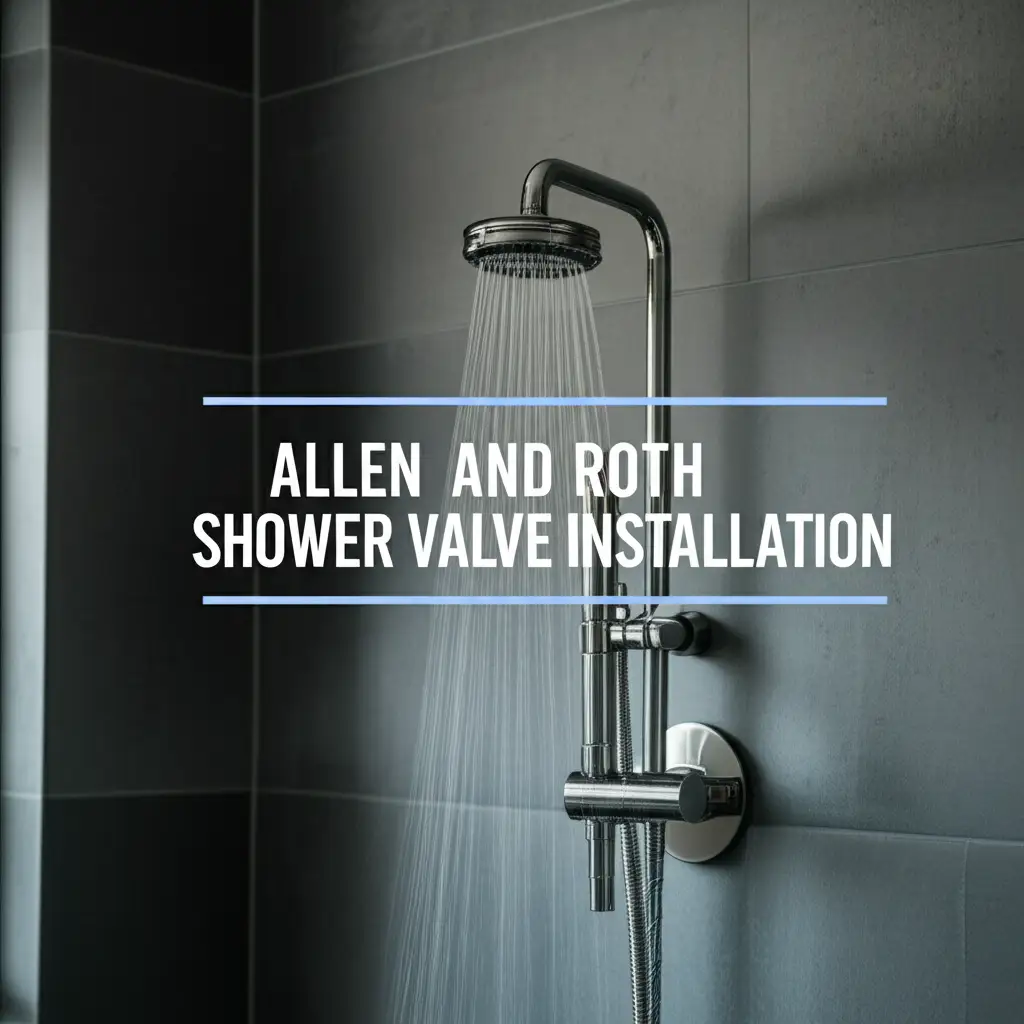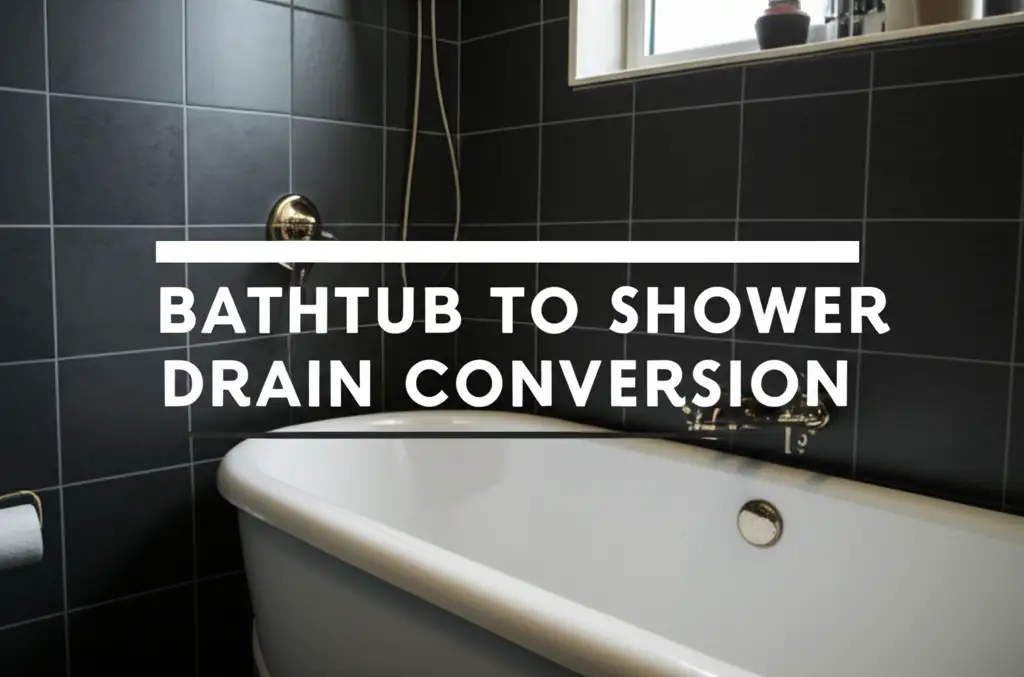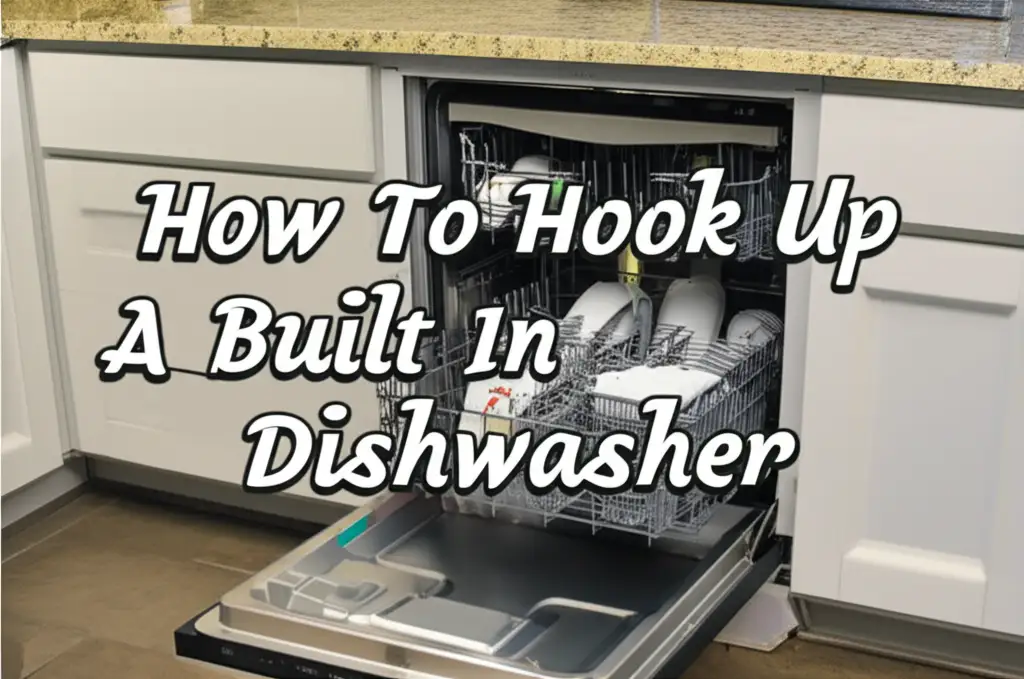· Liora Benning · Home Improvement · 18 min read
Allen And Roth Shower Valve Installation

Effortless Allen + Roth Shower Valve Installation Guide
Has your shower seen better days? Perhaps you face a dripping faucet or inconsistent water temperature. Upgrading your shower valve can transform your daily routine. An Allen + Roth shower valve offers a reliable and stylish solution for many homes. I find this brand a popular choice for homeowners tackling bathroom renovations.
Taking on an Allen And Roth shower valve installation yourself can save money. It also provides a great sense of accomplishment. This comprehensive guide helps you understand each step involved. We will cover everything from gathering your tools to troubleshooting common issues. By the end, you will feel confident to complete this important home improvement task.
Takeaway
- Gather all necessary tools and materials before starting.
- Always turn off the main water supply to your home.
- Carefully follow plumbing connection instructions for hot and cold lines.
- Test for leaks immediately after installation and before closing walls.
- Proper maintenance ensures your new valve lasts longer.
To install an Allen + Roth shower valve, you first turn off the water supply. Then, you remove the old valve if present. Next, prepare the new valve connections, typically soldering or using PEX fittings. Finally, you secure the new valve, connect the plumbing lines, and install the trim kit, testing for leaks before finishing the wall.
Understanding Your Allen + Roth Shower Valve System
Before you begin any hands-on work, it helps to understand what an Allen + Roth shower valve does. This central component controls water flow and temperature in your shower. It mixes hot and cold water to provide the desired output. Allen + Roth offers various types, mostly focusing on pressure-balancing or thermostatic models. Each type ensures a comfortable and safe showering experience.
Pressure-balancing valves react to sudden changes in water pressure. For example, if someone flushes a toilet, it prevents a scald by instantly adjusting the hot or cold water flow. This system protects you from sudden temperature shifts. Thermostatic valves, on the other hand, maintain a precise water temperature. They automatically adjust the hot and cold water to keep the temperature constant, even with pressure changes. Knowing your valve type helps with future maintenance and troubleshooting.
Your Allen + Roth valve comes with specific components. The main body, often called the rough-in valve, gets installed inside the wall. This part handles all the plumbing connections. Inside the valve body sits the cartridge. This small but vital part controls water flow and mixing. The trim kit, which includes the handle, escutcheon (wall plate), showerhead, and tub spout, completes the visible part of your shower. Understanding these parts makes the installation process clearer.
Many people choose to replace their shower valve for several reasons. You might have an old, leaky valve that drips constantly. Replacing it saves water and prevents potential water damage. Sometimes, homeowners want to upgrade their bathroom’s appearance. A new Allen + Roth valve and trim can give your shower a fresh, modern look. Other times, the valve simply fails to deliver consistent water temperature or pressure. A new valve solves these performance issues. Knowing these reasons helps you approach the installation with a clear goal in mind.
Essential Tools and Materials for Valve Installation
Preparing your workspace with the right tools and materials is a crucial first step for Allen + Roth shower valve installation. Having everything ready saves time and reduces frustration during the project. I always create a checklist before I start any plumbing job. This ensures I do not miss anything important. Gathering your tools beforehand makes the entire process smoother and more efficient.
First, you will need a pipe cutter. This tool makes clean, precise cuts on copper or PEX pipes. For copper pipes, you might also need a torch, solder, and flux if you plan to solder connections. If you use PEX tubing, you will need a PEX crimping tool and crimp rings or expansion tool and rings, depending on the PEX system. These tools ensure secure, leak-free connections. A level is essential to make sure your new valve is perfectly straight. This detail might seem small, but it impacts the trim kit’s appearance and proper function.
Next, have screwdrivers (Phillips and flathead) ready for securing the valve body and installing the trim. Adjustable wrenches or basin wrenches are also helpful for tightening fittings in tight spaces. You will also need plumbing tape (Teflon tape) or pipe dope for threaded connections. This material helps create a watertight seal. Safety is important, so wear safety glasses and gloves to protect your eyes and hands. A bucket and old towels are useful for catching any residual water when you open the pipes.
Of course, the most important material is your new Allen + Roth shower valve. Ensure it is the correct type and size for your plumbing system. Also, have the corresponding trim kit ready. You might need new pipe fittings, such as elbows or couplings, if you are changing your plumbing configuration. Sometimes, you need a small piece of drywall or a repair kit to patch the wall after access. Always have these materials on hand before you begin. A clean workspace and proper lighting also help. A well-lit area allows you to see all the connections clearly, reducing the chance of errors.
Preparation Steps Before You Begin Installation
Proper preparation sets the stage for a successful Allen And Roth shower valve installation. Skipping these steps can lead to unexpected problems or even water damage. My first rule of plumbing is always to turn off the water. This seems obvious, but it is the most critical safety measure. You do not want water spraying everywhere mid-project.
Begin by locating your home’s main water shut-off valve. This valve is usually found near your water meter or where the main water line enters your house. Turn it off completely. Once the main water is off, open a few faucets in your house, especially those on lower floors. This helps drain any remaining water from the pipes. This step reduces the mess when you cut into the shower lines. I like to keep a bucket handy for any drips.
Next, you need to gain access to the old shower valve. This often means cutting into the shower wall. Use a utility knife to score the drywall or plaster. Make a clean, rectangular opening large enough to work comfortably. Be careful not to cut into any pipes or electrical wires behind the wall. You may need to use a stud finder to locate studs and avoid cutting them if possible. Many valves are mounted to a wooden cross-brace between studs, making the removal process straightforward.
Inspect the existing plumbing lines. Identify which pipe is hot and which is cold. Standard plumbing codes typically dictate hot is on the left and cold is on the right. However, it is always good to double-check. You can do this by briefly turning the water back on and feeling the pipes, or by looking for markings. Note the type of piping (copper, PEX, CPVC). This helps confirm you have the right connectors and tools for your new Allen + Roth valve. If your shower has a different drain type, like ABS vs PVC shower drain, it might also influence how you approach the overall plumbing aspect, though less directly related to the valve itself.
Step-by-Step Allen + Roth Shower Valve Installation
Installing your Allen + Roth shower valve involves several key steps. I will guide you through each part, from removing the old valve to securing the new one. Remember, precision in each step prevents future leaks. Patience is a virtue here.
First, if replacing an existing valve, you must remove the old one. Use your pipe cutter to carefully cut the hot and cold water supply lines and the shower arm and tub spout lines, if applicable. Cut them far enough away from the old valve so you have room to work with the new connections. Be mindful of any remaining water in the pipes; a bucket will be useful. Clean the pipe ends thoroughly. For copper pipes, this means reaming and sanding the ends to ensure a clean surface for soldering.
Next, prepare your new Allen + Roth valve. Most valves have mounting flanges or brackets. Secure the valve body to a wooden cross-brace between the wall studs. Use screws to firmly attach it. Ensure the valve is level using your spirit level. This prevents your trim kit from looking crooked later. Pay attention to the “up” marking on the valve body, if present. The valve must be oriented correctly for proper function.
Now, connect the hot and cold water supply lines to the new valve. Match the hot supply to the hot inlet on the valve (usually marked “H” or on the left) and the cold to the cold inlet (usually “C” or on the right). For copper, apply flux to the pipe ends and valve connections. Then, solder them together using a propane torch and lead-free solder. Ensure proper ventilation. If using PEX, slide crimp rings onto the pipes, insert the PEX fittings into the valve, and then use your crimping tool to secure the rings. Always double-check your connections for tightness.
Connect the shower riser pipe (leading to the showerhead) and the tub spout pipe to the valve’s outlets. Again, use the appropriate connection method (soldering, PEX crimping, or threaded connections with plumbing tape). Ensure all connections are secure and watertight. This is a critical moment for preventing leaks, much like when you repair a water inlet valve on a washing machine – the principles of securing connections are similar.
Once all plumbing connections are made, perform a leak test. Turn your main water supply back on slowly. Inspect all new connections for any drips or wet spots. Listen for any hissing sounds, which might indicate a small leak. If you find leaks, turn off the water, drain the system, and re-tighten or re-solder the faulty connection. Repeat this test until all connections are completely dry. This step saves you from opening the wall again later.
Installing the Trim Kit and Final Touches
With your Allen + Roth shower valve rough-in securely in place and leak-free, the next phase focuses on the visible components: the trim kit. This step is about aesthetics and functionality. It turns a rough valve into a beautiful, working shower fixture. I always enjoy this part because it shows the project coming together.
Start by installing the escutcheon plate. This is the decorative plate that covers the opening in your wall around the valve. It hides the rough edges of your wall opening and the valve body. Slide the escutcheon over the valve stem and secure it to the wall studs or the valve body itself using the screws provided with your Allen + Roth kit. Ensure it sits flush against the wall. A little caulk around the edge of the escutcheon can seal out moisture, protecting the wall cavity.
Next, attach the shower handle. The handle slides onto the valve stem. There is usually a set screw that secures it in place. Use the appropriate screwdriver to tighten this screw. Make sure the handle moves smoothly and engages the cartridge correctly, allowing you to turn the water on/off and adjust the temperature. Test its motion to ensure full range of movement.
Now, install the showerhead. Apply plumbing tape (Teflon tape) to the threads of the shower arm extending from the wall. Then, screw the showerhead onto the arm. Hand-tighten it first, then use an adjustable wrench to give it a final quarter-turn, being careful not to overtighten. Over-tightening can crack the fixture or strip the threads. For those considering an upgrade, adding a second shower head is often done at this stage, requiring additional plumbing from the valve.
If your setup includes a tub spout, install it next. Many tub spouts slide onto a copper pipe stub-out and are secured with a set screw underneath. Others thread directly onto a male adapter. Apply plumbing tape if it is a threaded connection. Push or screw the spout onto its pipe, ensuring it is level before tightening the set screw or the connection.
Finally, turn the main water supply back on completely. Test your new Allen + Roth shower system. Check the water flow from both the showerhead and the tub spout (if applicable). Verify that the hot and cold water mix correctly and that you can achieve your desired temperature. Look for any new leaks around the trim kit or showerhead. At this point, I like to run the shower for a few minutes to ensure everything is perfect. With your new valve installed, you might then consider other bathroom tasks, like knowing how to clean your tile shower floor to complete your bathroom’s refresh.
Troubleshooting Common Shower Valve Issues
Even after careful Allen + Roth shower valve installation, you might encounter small issues. Do not get discouraged. Many common problems have simple solutions. I have dealt with these issues myself, and understanding them helps in quick fixes. Identifying the problem accurately is the first step to resolving it.
One frequent issue is a leak after installation. If you see water dripping from around the escutcheon or the connections, turn off the water immediately. Leaks usually come from poorly tightened connections or insufficient plumbing tape/solder. Re-tighten any threaded connections using a wrench. If it is a soldered joint, you might need to re-solder it, ensuring enough heat and flux for a good bond. Sometimes, a tiny burr on a pipe edge can cause issues. Clean all pipe ends thoroughly before reconnecting.
Another common problem is inconsistent water temperature or no hot/cold water. This often points to the valve’s cartridge. If the water is always cold, the hot water inlet might be blocked or incorrectly connected. If it is always hot, the cold water inlet has a similar issue. Sometimes, the cartridge itself is faulty or not seated correctly. Remove the handle and escutcheon, then carefully remove and reinsert the cartridge. Ensure it is oriented correctly according to the manufacturer’s instructions. Debris from the plumbing lines can also clog the cartridge ports. Flushing the lines before installing the cartridge can prevent this.
Low water pressure from the showerhead or tub spout can also be frustrating. First, check if the main water supply is fully open. Then, inspect the showerhead itself; it might be clogged with mineral deposits. Unscrew it and clean any debris from its screen. The pressure balancing unit or thermostatic element inside the valve could also be partially blocked. If you suspect this, you might need to remove the cartridge and inspect for any obstructions. Sediment in the water lines often causes these blockages.
Sometimes, the handle feels stiff or difficult to turn. This could be due to overtightening the escutcheon screws, which can bind the valve stem. Loosen them slightly to see if the handle moves freely. Mineral buildup on the cartridge or valve body can also cause stiffness over time. Regular maintenance, like flushing the valve or cleaning the cartridge with vinegar, can prevent this. Remember to always turn off the water before working on the cartridge.
Lastly, you might hear strange noises, like banging or whistling, when the water runs. Banging usually indicates water hammer, caused by loose pipes or sudden changes in water flow. Whistling can come from partially closed valves or small restrictions within the plumbing. Ensure all pipes are secured within the wall. If the noise persists, it might require professional evaluation to pinpoint the exact cause in your plumbing system.
Maintaining Your New Allen + Roth Shower Valve
Congratulations on your successful Allen + Roth shower valve installation! Now, to ensure your new valve provides years of trouble-free performance, regular maintenance is key. Taking a few simple steps periodically can prevent common issues and extend the life of your plumbing fixtures. Think of it like taking care of your car; small check-ups prevent big problems later.
One of the easiest ways to maintain your shower valve is through regular cleaning. Mineral deposits, especially from hard water, can build up on the visible trim components, affecting their appearance and potentially the handle’s smooth operation. Use a soft cloth and a non-abrasive cleaner to wipe down the handle, escutcheon, and showerhead regularly. Avoid harsh chemicals that can damage the finish. For mineral buildup on the showerhead, you can often remove it and soak it in a vinegar solution overnight.
The heart of your Allen + Roth valve is its cartridge. Over time, this component can accumulate sediment or wear out, leading to drips or inconsistent temperature. I recommend checking your valve’s manufacturer instructions for suggested cartridge maintenance or replacement intervals. Typically, if you notice a persistent drip from the showerhead when the valve is off, or if the temperature becomes hard to control, it is likely time to inspect or replace the cartridge. This usually involves turning off the water, removing the handle and escutcheon, and carefully pulling out the old cartridge.
Signs of wear for a shower valve include a noticeable drop in water pressure, erratic temperature fluctuations, or an increase in handle stiffness. If you observe any of these, it is a good idea to address them promptly. Delaying can turn a minor issue into a major repair. Sometimes, simply cleaning the cartridge or flushing the valve can restore proper function. Always consult your valve’s manual for specific troubleshooting steps and replacement part numbers.
To prolong your valve’s life, consider the water quality in your home. If you have very hard water, installing a whole-house water softener can significantly reduce mineral buildup in all your plumbing fixtures, including your shower valve. This investment can save you money on repairs and replacements in the long run. Additionally, avoid forcing the handle when it feels stiff. This can damage the internal components. Gentle, consistent operation is best. By following these simple maintenance tips, your Allen + Roth shower valve will continue to provide a refreshing and reliable shower experience for many years.
FAQ Section
Q1: How long does Allen + Roth shower valve installation take for a DIYer? A: For an experienced DIYer, an Allen + Roth shower valve installation can take 4-8 hours. This includes preparation, valve replacement, and trim installation. If you are new to plumbing or encounter unexpected issues, it might take a full day or longer. Planning and having all tools ready can significantly reduce the time.
Q2: Do I need a plumber for Allen + Roth shower valve installation? A: While a professional plumber ensures a precise and compliant installation, many homeowners can successfully perform an Allen + Roth shower valve installation. This assumes they have basic plumbing knowledge and the right tools. If you are uncomfortable with soldering or working with water lines, hiring a plumber is a wise choice to avoid potential leaks or damage.
Q3: What causes low water pressure after valve replacement? A: Low water pressure after an Allen + Roth shower valve installation often results from a few issues. The main water supply might not be fully open. Debris from the old pipes can also clog the new valve’s cartridge or the showerhead screen. Sometimes, an incorrectly installed or faulty pressure balancing unit within the valve limits flow.
Q4: Can I replace just the cartridge in my Allen + Roth valve? A: Yes, you can often replace just the cartridge in your Allen + Roth shower valve. The cartridge is a common wear item. If your valve is dripping, has inconsistent temperature, or feels stiff, a new cartridge is usually the first troubleshooting step. Ensure you purchase the correct Allen + Roth replacement cartridge for your specific model.
Q5: What’s the difference between pressure balance and thermostatic valves? A: A pressure balance valve reacts to pressure changes to prevent scalding by adjusting hot and cold water flow. A thermostatic valve, on the other hand, maintains a precise, consistent water temperature regardless of pressure fluctuations. Thermostatic valves offer greater temperature stability and comfort, while pressure balance valves provide essential safety.
Conclusion
Tackling an Allen And Roth shower valve installation might seem like a daunting project at first. However, with careful planning and a step-by-step approach, it becomes a manageable and rewarding home improvement task. You have learned about understanding your valve, gathering the right tools, and executing each part of the installation process. We also covered installing the trim kit, troubleshooting common issues, and maintaining your new fixture.
Remember that patience and attention to detail are your best allies in any plumbing endeavor. A well-installed Allen + Roth shower valve provides consistent water temperature, reliable flow, and a fresh look for your bathroom. You have the knowledge now to upgrade your shower experience. Feel proud of your ability to enhance your home. Do not hesitate to use these steps to begin your project. Your new shower awaits.





